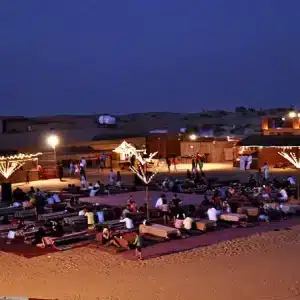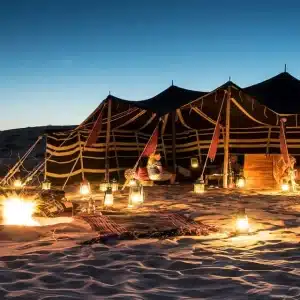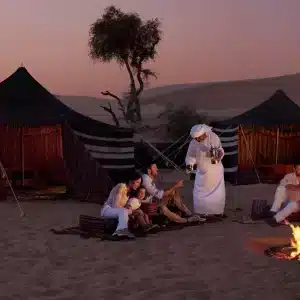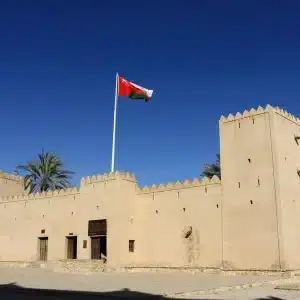15 Incredible Oman Tours to Experience the Real Arabia

Oman Tours
Situated on the southeastern edge of the Arabian Peninsula, Oman offers an intoxicating blend of ancient culture, stunning geography, and warm hospitality. Oman tours have become a favorite among travelers seeking a genuine, unexpected experience—unlike the over‑commercialized routes of neighboring nations. One day you’re trekking arid desert dunes; the next, you’re cooling off in emerald wadis or sipping kahwa in historic souks. Oman tours promise diversity, hidden surprises, and authentic connection to place.
From vibrant Muscat to quiet fishing villages along the Arabian Sea, each destination feels freshly discovered—even when experienced on repeat visits. Whether you crave luxury, adventure, culture, or solitude, Oman tours are tailor‑made to exceed expectations and reveal more than just scenic beauty—they reveal character. In this article, each outlined segment is explored in depth, with passages between 400 and 500 words. Every heading flows into the next to guide you toward your ideal Oman adventure.
Why Choose Oman for Your Next Tour?
Oman is a country of contrasts—rolling sands, misty mountains, emerald wadis, and timeless fortresses. But beyond landscapes, Oman tours shine because they feel deeply personal and intimately paced. The country remains refreshingly undiscovered by mass tourism, meaning you’ll rarely compete for photo ops. The people are famously hospitable—you’ll be invited for pomegranate juice in a tiny desert home, and welcome at every market stall.
Tours here prioritize authenticity: guides are often Omanis with generational knowledge, not just hired drivers. You’ll learn about frankincense trade routes, desert survival, fishing traditions, and Bedouin poetry—they’re not just facts but living lore. The country’s stability and safety make it ideal for families, solo travelers, and explorers with a thirst for both comfort and adventure.
From a logistical standpoint, Oman is modern enough to be convenient but still unhurried. Roads are well‑maintained, Wi‑Fi reliable in towns, yet the silence of the Empty Quarter or the dark skies of Jebel Shams remind you that you’re still far from the ordinary. So if you’re craving a trip that balances ease with raw discovery, Oman tours should top your list. With flexible itineraries and options for every budget, you’ll find experiences designed for your travel style — from luxury dune camp glamping to no‑frills desert hikes that cost nothing but sweat.
Best Time to Take Oman Tours
Choosing when to embark on Oman tours can make all the difference. The ideal seasons are October to early May, when the weather in the north (Muscat, Wahiba Sands, Jebel Shams) is mild—perfect for mountain hikes or wadi swims. Daytime highs sit around 23–30 °C, pleasant for exploration, though early mornings may feel crisp, especially at high altitudes.
For southern Oman including Salalah, plan between June and September, when the “Khareef” monsoon transforms the Dhofar region into a lush green paradise. Waterfalls appear, valleys bloom, and the air fills with fog and mist. It’s a once‑in‑a‑lifetime transformation: wadis that were bone‑dry become roaring rivers, and rocky hillsides sprout vivid vegetation. Though rain is light, the landscape change is dramatic.
While summer (June–August) can be excessively hot in much of Oman—temperatures often exceed 40 °C—this season is ideal for Salalah’s regeneration. If you’re cruising or planning beach days in Muscat or Sur, winter offers optimal swimming conditions. And for desert camping or stargazing, winter’s clear skies and refreshingly cool nights are unbeatable.
Avoid Ramadan if you want unhurried tour experiences and open restaurants, as working hours shift and eating in public isn’t permitted during daylight. The Eid Al‑Fitr and Eid Al‑Adha periods are joyous, with colorful celebrations—but booking tours in advance is essential. So, aligning your Oman tours with the country’s seasons ensures you experience each region at its best—whether that’s mountain snow‑capped at dawn or misty monsoon valleys in Khareef.
Top Must‑Visit Destinations in Oman Tours
Oman’s diverse regions showcase the country’s multifaceted charm, making it essential to include varied destinations on your Oman tours. Muscat, the capital, balances modernity and tradition with the majestic Sultan Qaboos Grand Mosque, Royal Opera House, and Muttrah Souq. Nizwa holds lush gardens and the iconic Nizwa Fort, once central to Oman’s political heritage. The mountain villages of Jebel Akhdar offer cool escapes, terrace farming, and dramatic cliff‑side hiking.
The inland fortress town of Bahla, a UNESCO site, reveals centuries‑old pottery traditions. Wahiba Sands fascinates with acres of golden dunes, Bedouin camps, and wildlife such as oryx and desert hare. Then there’s Wadi Shab, whose turquoise pools, cave‑hidden waterfall, and cliff jumps feel other‑worldly. In the southeast, Sur and its dhow‑building yards connect you to Oman’s seafaring past, while the spy‑thriller fjords of Dhofar region reveal hidden gems and turtle‑nesting beaches.
And off, the sublime region of Salalah, with its Khareef transformation—lush valleys, tropical flowers, and offshore dolphins. Each destination blends landscapes, culture, and stories. Together, they form a mosaic that every Oman tour should include—yet you can easily tailor time spent depending on whether you’re chasing adventure, heritage, or landscape photography. The relaxed pace across regions ensures you don’t simply tick boxes—but absorb what makes Oman unique.
Desert Safari Tours in Oman
A highlight of Oman tours is the unforgettable Wahiba Sands desert safari. As you cross the threshold from asphalt into sea‑like dunes, the world transforms. At sunrise, shafts of golden light paint each crest; by afternoon, waves of heat rise in mirages. Tour itineraries often begin with dune‑bashing in a 4×4, rockets of sand cascading down steep slopes, triggering adrenaline and awe.
Afterward, camel‑trekking sessions reconnect you with age‑old desert travel traditions—camels maintain a gentle, steady pace and let you experience the silence once traveled by traders. Most safari tours include a Bedouin camp stay under the stars, with tents, low tables, Arabic coffee, and traditional food like harees. Evenings bring stargazing—absent city lights, the skies are dazzling.
The next day, sandboarding feels downright meditative as boards glide into soft dunes. If you’re on a luxury safari tour, you’ll enjoy plush tents, hot showers, and gourmet meals infused with saffron and local spices. Budget tours favor authenticity—sleeping under the stars, communal dinners, the warmth of fire‑light storytelling echoing. In camp, you’ll learn desert ecology: how plant roots cling to scarce water, how oryx and snakes adapt. For photographers, sunrise from the main dune offers incredible light and long shadows. With gentle daytime temps (winter and spring), and cooler nights, desert safari tours on Oman adventures leave you deeply moved—and better in tune with nature and timeless rhythms.
Cultural & Heritage Tours
Oman tours are incomplete without exploring the country’s rich heritage, and cultural and heritage tours immerse you in its soul. Muscat holds absolute gems: the Sultan Qaboos Grand Mosque, an architectural marvel clad in Italian marble, stained glass, and calligraphy. Nearby, the Royal Opera House hosts performances from around the world—tour packages often include backstage tours and high‑tea.
In Nizwa, visit the imposing round Nizwa Fort, once a defensive fortress. Climb ramparts to spot palm groves and olive orchards. Souk excursions here dive into traditional crafts: silver‑smiths making “khanjars” (daggers), pottery artisans shaping pitchers, and goat‑skin leatherworkers—each stall animated with stories and pride.
Further inland is Bahla Fort, a UNESCO site reflecting 12th‑century military architecture. Nearby potters still shape clay on traditional wheels, selling at cooperative shops. In the town of Ibra, you’ll find falaj irrigation systems—ancient engineering allowing date palms to flourish in arid valleys.
In smaller villages, custom tours take you inside mud‑brick homes and weaving workshops. You’ll taste Omani bread (khubz) baked in clay ovens, learn to pour coffee cups correctly, and hear tribal poetry (nabati) known as the “language of the desert.” These experiences enrich Oman tours by turning attractions into living, human encounters—revealing that Oman’s strength lies not only in its forts and dunes but in the people who guard their traditions with heartfelt pride.
Oman Coastal Tours
Oman’s coastline stretches from windswept beaches to dramatic fjords and quaint fishing villages, offering coastal tours full of variety. Near Muscat, Qantab and Yiti beaches are picture‑perfect— turquoise waves crashing against rugged cliffs. Many coastal tours here offer snorkel‑and‑swim stops, sea kayaking through hidden inlets, or leisurely lunches in seaside cafés.
Farther south near Sur, coastal tours dive into dhow making in shipyards—the traditional wooden boats of Oman. A visit includes witnessing artisans work sand‑papery planks with hand tools, chanting rhythms of dusty spray and craftsmanship. These tours weave a cultural narrative: how Omanis relied on dhows for centuries to fish, trade, and connect across the Arabian Sea.
In the same region lies the awe‑inspiring coastal fjords of Musandam—though technically in the Musandam Peninsula—which can be reached on extended coastal tours. Here, steep cliffs shelter mirror‑green water as traditional boats glide silently through creeks, transporting you into a serene world of seabirds and dolphins.
Along Carmel, turtle‑nesting beaches at Ras Al‑Jinz near Sur are vital eco‑tourism sites: nighttime turtle‑watching tours let you cautiously observe green turtles laying eggs on the shore. EPC‑approved guides ensure low‑impact encounters. Whether you seek adventure or cultural immersion, Oman’s coastal tours deliver—combining sea‑side beauty with living traditions. Gentle sea breezes, palm‑scattered coves, birdsong, and early‑morning wildlife sightings make these tours both restful and memorable.
Muscat City Tours
Muscat city tours offer an elegant blend of modern grandeur and traditional charm. Begin at the Sultan Qaboos Grand Mosque, covering 416,000 m²—its prayer hall can host 20,000 worshippers. Notice the Persian carpet woven by 600 artisans and the massive chandelier. While non‑Muslim visitors aren’t allowed during prayer, there are open‑visits outside those times—bring long sleeves and floor‑length attire.
Next, head to Royal Opera House Muscat, with its white marble façade and landscaped gardens. Guided tours explain its acoustics, Ottoman‑inspired interiors, and musical programming. If a performance aligns with your visit, reserve tickets in advance to enjoy opera, ballet, or global music.
Wander Muttrah Souq, a labyrinth of narrow alleys bursting with frankincense, spices, textiles, Omani silver, and aromatic halwa. Near the souk stands Al‑Alam Palace, residence to the Sultan. Nearby forts like Mirani and Jalali anchor the harbor—a picturesque photo stop. Some city tours also include Bait Al‑Zubair Museum, a private collection that narrates Omani history through arms, costumes, and jewelry.
Muscat city tours might add a climb to Mountaintop Viewpoint (203 m) overlooking the Corniche—a dramatic panorama. Guided walks along the harbor road let you glimpse fishing boats, dhows, and fishermen weaving nets. Many tours finish with a sea‑side café or haven at Qurum Beach, where you can relax and reflect on an enriching day spent among culture, architecture, nature, and hospitality.
Salalah Tours & Khareef Wonders
Southern Oman’s Salalah region undergoes a miraculous transformation during Khareef, the southwest monsoon from June to September. Dry wadis bloom into emerald valleys, waterfalls appear in the hills, and a misty fog blankets the landscape. Salalah tours bring this verdant season to life—visit sites like Wadi Darbat, with its deep blue pool and waterfall, perfect for paddle‑boating.
At Ain Razat, a series of landscaped springs and shaded gardens cool the humid air. Nearby, Ain Athum features gentle cascades ideal for photographs and picnics. On Khareef days, drive up the Frankincense Trail—dense fog rolls past ancient trees in Wadi Dawkah, where frankincense resin has been tapped for millennia. Tours hit three UNESCO sites: Wadi Dawkah, the ruins of Sumhuram and Khor Rori, and old city of Al‑Baleed with its fascinating museum.
East of Salalah, Al Mughsail Beach and blow‑holes enthrall visitors with sea air funneling through rocky caves. Nearby Taqah Castle reveals coastal history and Omani artistry. Tours may include dolphin‑watching rides in calm waters, and optional snorkeling. To taste local hospitality, Salalah excursions often feature coconut harvesting, where locals demonstrate climbing and fiber extraction—the freshest juice imaginable.
Khareef tours include traditional snacks like halwa (sweet almond‑gum confections), dates, and tender bamboo shoots that grow seasonally. Because of the mist, pack a light raincoat—but fear not, the weather is mild and comfortable. Salalah tours during Khareef feel unlike anything in Arabia—they are lush, green, and aromatic—a captivating contrast to the usual image of desert Oman.
Mountain Adventure Tours in Oman
Oman tours scale new heights when you venture into the Hajar Mountains, particularly Jebel Shams (the Grand Canyon of Arabia) and Jebel Akhdar (the Green Mountain). These landscapes offer dramatic cliffs, crisp air, and terraced hillside villages carved into rock. Early mornings bring mist-filled gorges, and hiking trails here open a window to life at altitude—orchards of pomegranates and roses that thrive on cool mountain air.
On Jebel Shams, Oman tours often begin with a climb to the Balcony Walk, a narrow, elevated ridge offering sweeping views over the sheer canyon. The trail stretches 4–6 hours (round-trip) and rewards with vistas of ravines that plunge thousands of feet. Many tour itineraries include overnight camping at the cliff rim—gazing up at starlight from a vantage above neighboring peaks. Nights get cold, but thermals and a warm campfire make it enjoyable.
Descending toward Jebel Akhdar, climate subtly changes; terraced farmlands spill over hillsides growing pomegranates, apricots, and damask roses. Oman tours here often include orchard walks, visits to rosewater distilleries (particularly during spring), and village hikes to historic stone homes. Food stops might include traditional Omani sweets infused with rosewater or date syrup.
Adventure options abound: canyoning through Wadi Al Mujib, mountain biking along high-country roads, or trekking trails like Wadi Mayh. Guided tours explain geology—how limestone layers cultivated steep plateaus—and local conservation efforts, like restoring ancient falaj irrigation systems that still feed these orchards.
These high-altitude excursions complement desert and coastal tours perfectly—offering breath‑cooling change after sandy dunes. Whether you’re seeking strenuous hikes or scenic drives, Oman tours among the mountains bring nature, culture, and elevation all at once. And since the travel pace is slower, you’ll soak in views, villages, and the mountaintop stillness that contrasts the lowland bustle.
Wadi Exploration Tours
Among the most visually arresting segments of Oman tours are visits to iconic wadis—Wadi Shab, Wadi Bani Khalid, and Wadi Tiwi all feature turquoise pools, dramatic canyons, and swimming-ready landscapes. These wadis are fed by underground springs and flanked by date palms, shady rock walls, and occasional century-old falaj channels.
Wadi Shab, famous for its emerald pools and cave waterfall, requires a short boat ride and uphill hike through cliffs to reach a hidden grotto. Inside, light streaming through stone fissures makes the cave waterfall glow with ethereal beauty. Oman tours typically include guided swims, picnic baskets, and local guides to assist with ropes and safe route-finding.
By contrast, Wadi Bani Khalid offers easier access—its large, calm pools and paved picnic areas make it ideal for families. Vendors sell fresh dates, juices, and small snacks from shaded seating areas. Some Oman tour packages coordinate boat rides under overhanging palms and offer light hiking to smaller spring-fed pools at the headwaters.
For adventurous visitors, Wadi Tiwi presents deep, terraced pools and dramatic walls—perfect for cliff-jumping or canyon exploration. Tour operators emphasize eco‑safety—limiting group size and encouraging no‑litter practices.
These wadi excursions are highlights of Oman’s diverse terrain. After desert heat or coastal breeze, wadis offer cool water, scenic shade, and refreshing tranquility. Tour itineraries often connect multiple wadis in day trips, weaving swimming stops, lunch breaks, and brief village visits along the route. The balance of activity and leisure makes these tours especially satisfying and memorable.
Wildlife and Eco‑Tourism Tours
Oman tours also deliver moments of wildlife wonder. In Ras Al Jinz, near Sur, guided turtle‑watching tours right after dusk allow you to observe endangered green turtles laying eggs on nesting beaches. Special footpaths and low‑impact observation spots ensure minimal disturbance.
Marine tours off Salalah or Musandam frequently include dolphin‑watching, where pods of spinner and bottlenose dolphins accompany boats. Some operators also float out binocular-equipped guests during manta ray season near southern reefs. PADI-certified snorkeling and diving trips introduce visitors to coral gardens, reef fish diversity, and occasionally shipwrecks around Fazayah Beach.
On land, Wahiba Sands desert safaris offer glimpses of Arabian oryx, desert foxes, and rare birds like the lappet-faced vulture. Eco‑lodge stays along the Empty Quarter often include guided walks by conservation biologists who explain how desert flora and fauna survive with minimal water.
In the Hajar Mountains, Oman tours may include ornithology hikes—spot species like the endemic Omani wheatear, cliff-nesting falcons, and the elusive Arabian tahr, a wild mountain goat approaching extinction. Some lodges near Jebel Akhdar support tracking and habitat conservation.
Eco-tourism tours often partner with local NGOs, contributing a portion of fees to reforestation, turtle-egg protection, or falaj restoration. Guests may participate in seed planting or beach cleanups as part of a conservation itinerary.
These nature-based Oman tours cultivate environmental awareness alongside adventure. They offer hands-on learning, wildlife encounters, and deeply sustainable practices—reinforcing that tourism can be regenerative rather than extractive.








Comment (0)